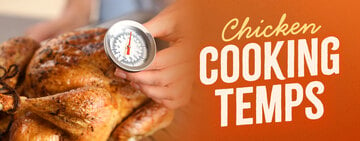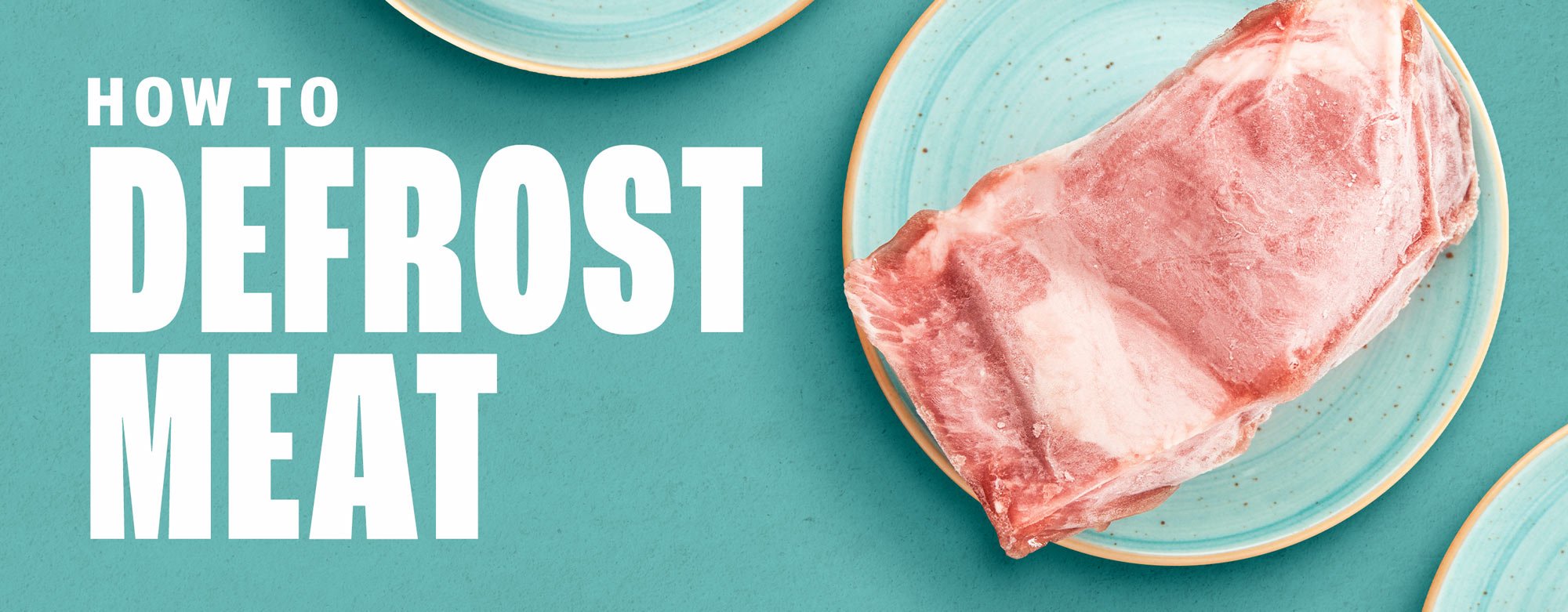
How to Defrost Meat
Last updated on 5/24/2023Defrosting meat is an essential part of food preparation. Often, people are in a hurry to get their meals cooked and resort to quick thawing methods, such as using hot water or leaving the package on the counter all day. However, these methods are not safe and may lead to foodborne illnesses. Raw or cooked meat must be kept at a safe temperature during storage and preparation. We’ll discuss the different methods of defrosting meat and the correct way to do it to ensure food safety.
Best Way to Defrost Meat
The best way to thaw meat is in the refrigerator over time. If you need to expedite the process, you can also defrost food in cold water or the microwave. These methods help you keep your food out of the “danger zone” as the temperature of the meat rises. The danger zone is that temperature window between 41 and 135 degrees Fahrenheit where bacteria like E. coli, Salmonella, and Listeria can grow rapidly, increasing the risk of food poisoning. As soon as these foods begin to thaw and become warmer than 40 degrees Fahrenheit, bacteria that may have been present before freezing can begin to multiply. This is why it is important to thaw meat safely and properly.
1. Defrosting Meat in Refrigerator
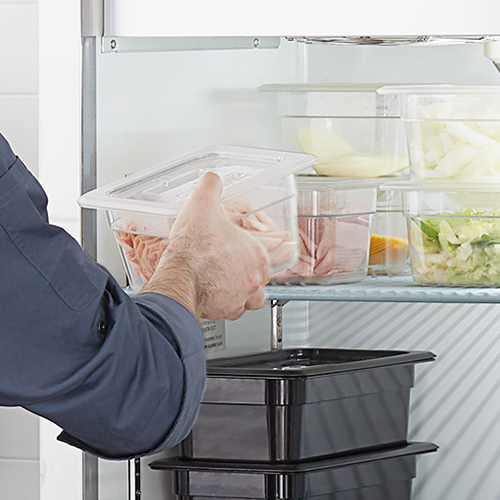
Defrosting meat in the refrigerator is the safest method of thawing, as it keeps the meat at a consistent temperature that is too cold for bacteria to grow. It also can help your kitchen save water by not running it over frozen meat to defrost. Most cuts of meat will defrost in 10 - 24 hours in the refrigerator. To thaw larger cuts, allow 24 hours for every 5 pounds of meat.
Here are some tips to keep in mind when defrosting meat in the refrigerator:
- Place the meat in the refrigerator in the proper food storage order. Ready-to-eat foods should go at the very top, followed by seafood, whole cuts of beef and pork, ground beef and ground fish, and whole and ground poultry at the bottom.
- Defrost meat in a bowl or pan to catch any liquids from ice or juices.
- After thawing in the refrigerator, items such as ground meat, stew meat, poultry, and seafood should remain safe for an additional day or two before cooking.
- Red meat cuts are good for 3 to 5 days after thawing in the refrigerator.
- Food thawed in the refrigerator can be refrozen without cooking, but the texture and quality of the meat may suffer.
It's important to plan and give yourself enough time to thaw the meat properly. Don't rush the process by using other thawing methods, as they can lead to uneven thawing and potential food safety issues.
Can You Leave Meat Out to Thaw?
One of the most common misconceptions about defrosting meat is that you can simply leave it out on the counter to thaw. However, food must not be left at room temperature for more than two hours, or you risk entering the danger zone where bacteria begin to multiply rapidly. This can cause foodborne illnesses and is considered a major health code violation for time-and-temperature abuse. Defrosting meat in the refrigerator is the safest method and allows for a controlled thawing process. If meat is left out to thaw, the temperature must be monitored during the two hours and it should be returned to the refrigerator or cooked before it can dip into the danger zone.
2. Defrosting Meat in Water
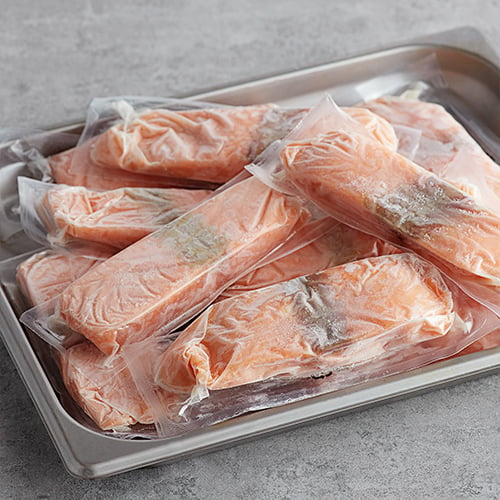
Defrosting meat in running water is a faster method than refrigerator thawing, but it requires more attention. Depending on the size of the meat, it may take anywhere from an hour to several hours to fully thaw. A pound of meat thaws in about an hour or less, while three to four pounds may take 2 to 3 hours.
Follow these steps to learn how to defrost meat in water:
- Make sure that the meat is in a leak-proof package or plastic bag. This will prevent any water from seeping into the meat and causing it to become waterlogged.
- Place the meat in a container large enough to fully submerge the meat.
- Put the container in a clean and sanitized prep sink.
- Turn on the faucet, allowing the water to flow over the meat and down the drain. The water should be at 70 degrees Fahrenheit.
- If the meat floats to the top, use a plate or another heavy object to weigh it down.
Once the meat has thawed in water, it should be cooked and properly cooled before refreezing if not being served immediately. This is because the water-thawing process can cause changes in texture and moisture content that can impact the quality of the meat.
Can You Defrost Meat in Hot Water?
While it may seem simpler to defrost meat in hot water, it can lead to serious health risks. When meat is defrosted in hot water, it can enter the danger zone temperature range between 41 and 135 degrees Fahrenheit where bacteria can grow rapidly. This increases the risk of food poisoning and contamination.
Even if the meat is cooked thoroughly afterward, the bacteria may have already produced toxins that can make people sick. Instead, it's recommended to defrost meat in the refrigerator or in cold running water to keep it out of the danger zone as it thaws.
3. Defrosting Meat in Microwave
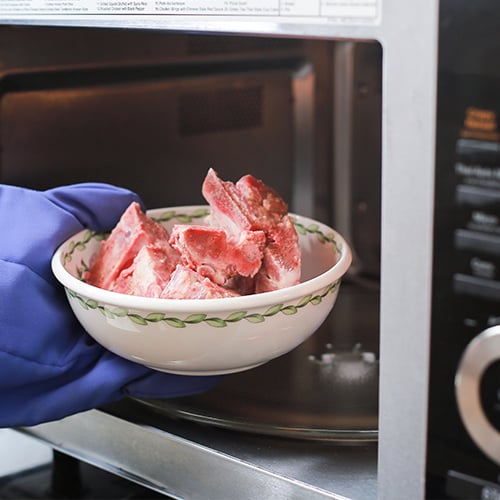
If you need to thaw frozen meat quickly, using a microwave is a great option. You can thaw frozen meat in the microwave on the defrost setting. The defrost setting uses about 30% less power to heat food gently, thawing it instead of cooking it. It moves food rapidly through the danger zone, making it a safe option for defrosting meat in a time crunch. An average 12 oz. steak will thaw in about 10 - 15 minutes in the microwave.
It is important to keep these tips in mind as you thaw meat in the microwave:
- Place the meat in a bowl or on a plate in case juices escape while thawing in the microwave.
- Larger pieces of meat may thaw unevenly in the microwave. To avoid this, it is best to rotate the meat occasionally while it is defrosting.
- Once meat is thawed in the microwave, you should plan to cook it immediately. This is because some areas of the food may become warm and begin to cook during the thawing process.
Can You Cook Meat from Frozen?
You can certainly cook frozen meat without thawing it first. It will take about 50% longer to cook it compared to if it was defrosted. So, if your recipe calls for a 1 hour cook time, you'll need to cook it from frozen for 1 1/2 hours. Use a probe thermometer to make sure it has reached a safe internal temperature.
How Long Does It Take Meat to Thaw?
Meat can take about 24 hours to defrost in the refrigerator, an hour in a cold-water bath, and about 15 minutes on the defrost setting in a microwave Most time-and-temperature health violations due to thawing come from time constraints. It’s incredibly important to plan ahead and give yourself enough time to thaw your meat and make sure it is safe to serve to your customers.
Use the following defrost times as a guideline for thawing meat:
- Refrigerator Thawing: 10 - 24 hours; 24 hours for every 5 pounds
- Cold Water Thawing: 1 - 3 hours; 30 minutes per pound (Keep the water running as it thaws)
- Microwave Thawing: 10 - 15 minutes; Rotate meat regularly to defrost evenly
Defrosting Different Types of Meat
Train your kitchen to properly handle the thawing process by following these defrosting tips for some of the most common types of meat.
How to Defrost Chicken
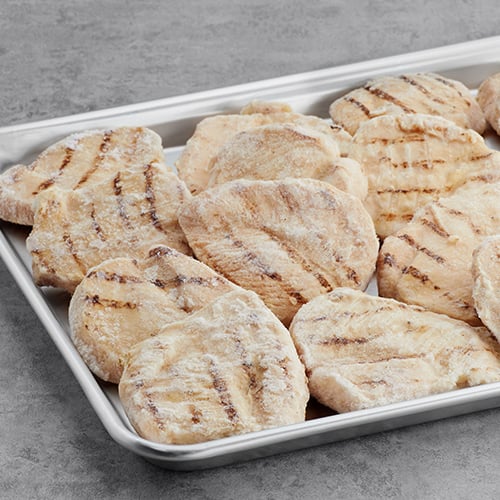
Chicken is most at risk for carrying bacteria like Campylobacter and Salmonella. To prevent the spread of these pathogens, follow these tips to safely thaw cuts of chicken:
- In the refrigerator: In a bowl, move the chicken to the refrigerator 24 hours before you need to cook it.
- In cold water: Place the chicken in a leak-proof bag and submerge it in cold running water for 1 - 3 hours depending on the size.
- In the microwave: Place the chicken in a microwave-safe container and put it on the defrost cycle. This will take approximately 10 - 15 minutes. Clean and cook the chicken immediately after defrosting.
How to Thaw a Turkey
Before you can fry a turkey, it must be completely thawed to ensure a safe frying process. Use these thawing techniques to make sure your turkey is ready to be cooked:
- In the refrigerator: Defrost the turkey in the refrigerator, giving it 24 hours for every 4 - 5 pounds of meat. A 16 lb. turkey will take about 4 days to thaw in the refrigerator.
- In cold water: Put the turkey in a clean and sanitized sink, submerging it in cold running water. Give your turkey 30 minutes of defrosting time for every pound. A 16 lb. turkey will take about 8 hours to thaw in cold water.
- In the microwave: Place the turkey in the microwave and use the defrost feature based on the bird’s weight. This will usually take 6 minutes per pound. Cook the turkey immediately after defrosting.
How to Defrost Fish
Fish has very delicate meat and should be defrosted gently. If you’re planning to cook fish, follow these thawing methods for the safest and best results:
- In the refrigerator: For larger pieces of fish, move the fish to the refrigerator 24 hours before cooking. If shipped in a vacuumed-sealed pouch, leave the packaging in place until you are ready to cook the fish.
- In cold water: In a plastic bag or vacuumed-sealed pouch, place the fish in a cold running water for 20 - 30 minutes.
Defrosting Meat Review Questions
Brush up on your knowledge of thawing meat to ensure you are keeping your customers safe.
Defrosting meat may seem like the simplest step in food prep but can lead to health risks if done incorrectly. Enforce proper thawing techniques in your kitchen so you can pass your next health inspection and have confidence that you’re serving food your customers can trust.

